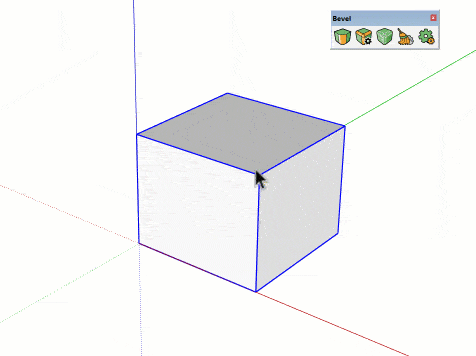Are you looking for ways to boost creativity, collaboration, and productivity in your team? Do you want to engage in a dynamic and interactive process that generates innovative solutions to complex problems? If so, hosting a design workshop may be the perfect solution for you!
Design workshops are a highly effective way to foster creativity, encourage idea generation, and inspire collaboration. They are a powerful tool for designers, marketers, entrepreneurs, and anyone who wants to develop new products, services, or processes. In this blog post, we’ll walk you through the steps of creating and running a successful design workshop that will leave your team feeling energized, inspired, and motivated.

Step-by-Step Guide to Hosting a Successful Design Workshop
- Define your objective
The first step in creating a successful design workshop is to define your objective. What do you want to achieve through the workshop? Is it to solve a particular problem, generate new ideas, or improve an existing product or service? Defining your objective will help you design the workshop’s structure, identify the right participants, and choose the appropriate tools and techniques.
- Plan the workshop
Once you have defined your objective, it’s time to plan the workshop. Determine the duration of the workshop, the number of participants, and the location. Decide on the format of the workshop, whether it will be virtual or in-person, and the tools and materials you’ll need, such as whiteboards, markers, sticky notes, and sketching tools. Create an agenda that outlines the workshop’s flow, including breaks and activities.
- Promote the workshop
Promoting the workshop is critical to its success. Communicate the workshop’s objectives, benefits, and activities to potential participants. Use a combination of email, social media, and other communication channels to reach out to your target audience. Make sure you provide enough information about the workshop’s structure and format to help participants prepare and know what to expect.
- Prepare the participants
Before the workshop, it’s essential to prepare the participants. Provide them with background information on the workshop’s objective, the tools and techniques you’ll be using, and any pre-workshop activities they need to complete. Encourage participants to come prepared with an open mind and a willingness to collaborate and share ideas.
- Run the workshop
On the day of the workshop, it’s time to put your planning and preparation into action. Start by introducing the objective of the workshop and the agenda. Then, guide participants through a series of activities designed to encourage creativity, collaboration, and problem-solving. Use a variety of techniques, such as brainstorming, mind mapping, and sketching, to generate ideas and encourage participation. Facilitate the workshop’s group dynamics, ensuring that everyone has an opportunity to contribute, and that the conversation stays on track.
- Follow up and evaluate
After the workshop, it’s essential to follow up and evaluate its success. Gather feedback from participants, both on the content and format of the workshop, as well as the outcomes. Review the ideas generated and identify the most promising ones. Create an action plan for implementing these ideas and assign responsibilities to the appropriate team members. Finally, use the insights gained from the workshop to improve future workshops and your team’s overall performance.
Design thinking is a powerful methodology that underpins most successful design workshops. It involves a human-centered, iterative, and collaborative approach to problem-solving, which emphasizes empathy, ideation, prototyping, and testing. By adopting design thinking principles, you can design workshops that engage and inspire your team, generate creative solutions, and improve overall productivity.
Some key design thinking tools and techniques you can use in your workshops include:
- Empathy mapping: This involves understanding the users’ needs, wants, and pain points by creating a visual representation of their thoughts, feelings, and behaviors.
- Mind mapping: This involves creating a visual representation of ideas, concepts, and relationships to generate new insights and connections.
- Crazy 8s: This involves sketching eight different solutions to a problem within eight minutes, encouraging fast and diverse idea generation.
- Prototyping: This involves creating low-fidelity models of ideas to test and refine them before committing to a full-scale implementation.
- User testing: This involves testing prototypes with users to gather feedback and refine ideas further.
Design workshops can take many forms, depending on your specific needs and objectives. Some popular types of design workshops include:
- Ideation workshops: These focus on generating new ideas, exploring new possibilities, and breaking through creative blocks.
- Problem-solving workshops: These focus on addressing specific challenges, finding solutions, and improving existing products or services.
- Co-creation workshops: These involve collaborating with stakeholders, such as customers, partners, or employees, to generate ideas and co-create solutions.
Design workshops require careful planning, preparation, and facilitation to ensure success. As a facilitator, your role is to guide the group dynamics, encourage participation, and ensure that the workshop stays on track. Some essential facilitation skills include active listening, empathy, flexibility, and adaptability.
Conclusion
In summary, hosting a design workshop is a powerful way to foster creativity, collaboration, and innovation in your team. By following the steps outlined in this guide and adopting design thinking principles and tools, you can create a workshop that yields amazing results. Remember to define your objective, plan the workshop carefully, promote it to potential participants, prepare them ahead of time, run the workshop smoothly, and follow up with evaluations and implementation plans. With the right mindset, tools, and techniques, you can create a design workshop that engages, inspires, and delivers results.












